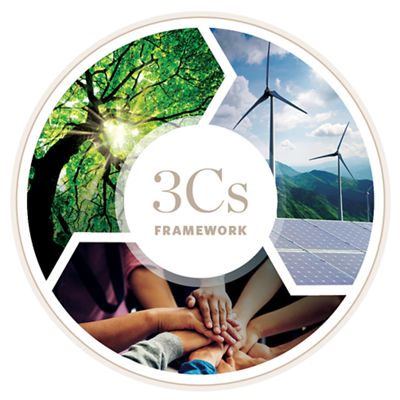Connected West
With coordination, the grid in the Western United States could be updated to meet energy needs while avoiding costs.
A new study shows how we can meet the clean energy needs of Americans in the Western United States in a way that minimizes impacts to nature and people.
Connected West, released in September 2024, is a plan that shows where transmission expansion is most needed in the region during the next 20 years. The study, conducted by Energy Strategies for GridLab and Gridworks, uses data that was generated for TNC’s Power of Place West report. That means it takes climate, conservation and communities—the 3Cs—into consideration. It offers different scenarios to get electricity from where it’s generated to where it will be used while reducing impacts to plants, wildlife, people and the economy. That is key to achieving a clean energy transition where new renewable energy, like wind and solar, powers the grid.
See the Connected West Study
Learn what transmission is needed in the West over the next 20 years to meet demand.
Read Connected West

The Connected West plan maximizes benefits to climate, conservation and communities—what TNC calls the “3Cs.”
The results from Connected West results are highly encouraging. They indicate that only 15,600 miles (just 15% more than existing infrastructure) of new transmission lines are needed if it is planned in a coordinated way. Even better, most of the new capacity can be added by updating and co-locating lines with existing infrastructure. That minimizes the amount of new transmission line development on natural or undeveloped land.
Building on natural land—or “greenfields”—cannot be entirely avoided. The current high voltage transmission network in the West crosses 100,000 miles. Some models indicate that an additional 6,200 miles of transmission lines could be needed in the region to meet clean energy goals. But Connected West shows us that with coordinated planning, only an estimated 2,400 miles of new greenfield lines would be needed.
But these results can only be realized if there is well-coordinated planning among utility regulators in the West. By working together to build the grid we need, we can achieve reliable, cost-efficient electricity while supporting a strong economy in the West and protecting our natural resources. Without that coordination, we will have a more expensive grid.
Connected West By The Numbers
Explore the Report
Read the Connected West study to learn how we can develop the transmission needed in the West to ensure reliability and lower costs to meet a high demand future over the next 20 years.




